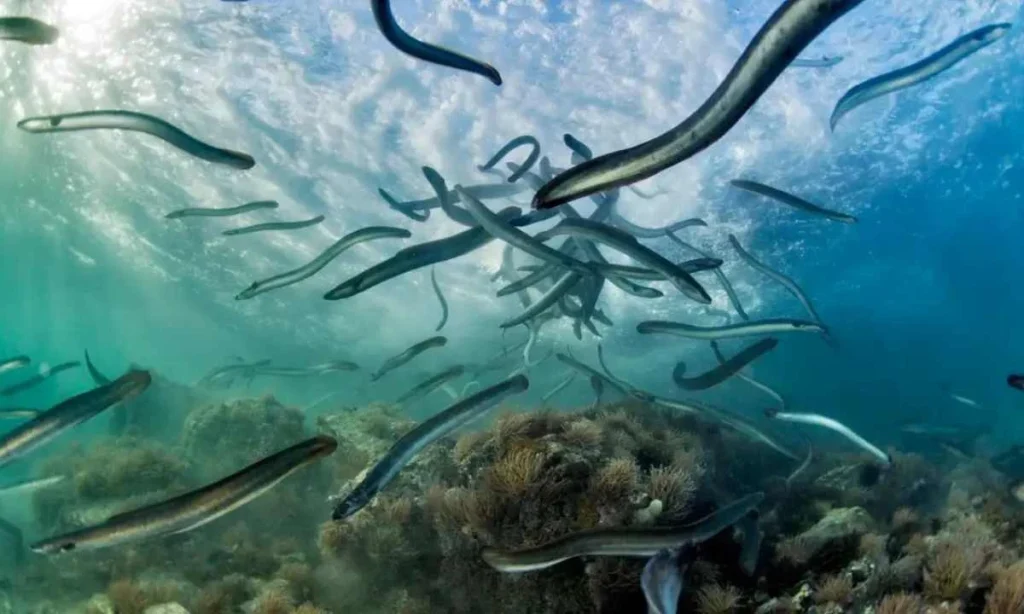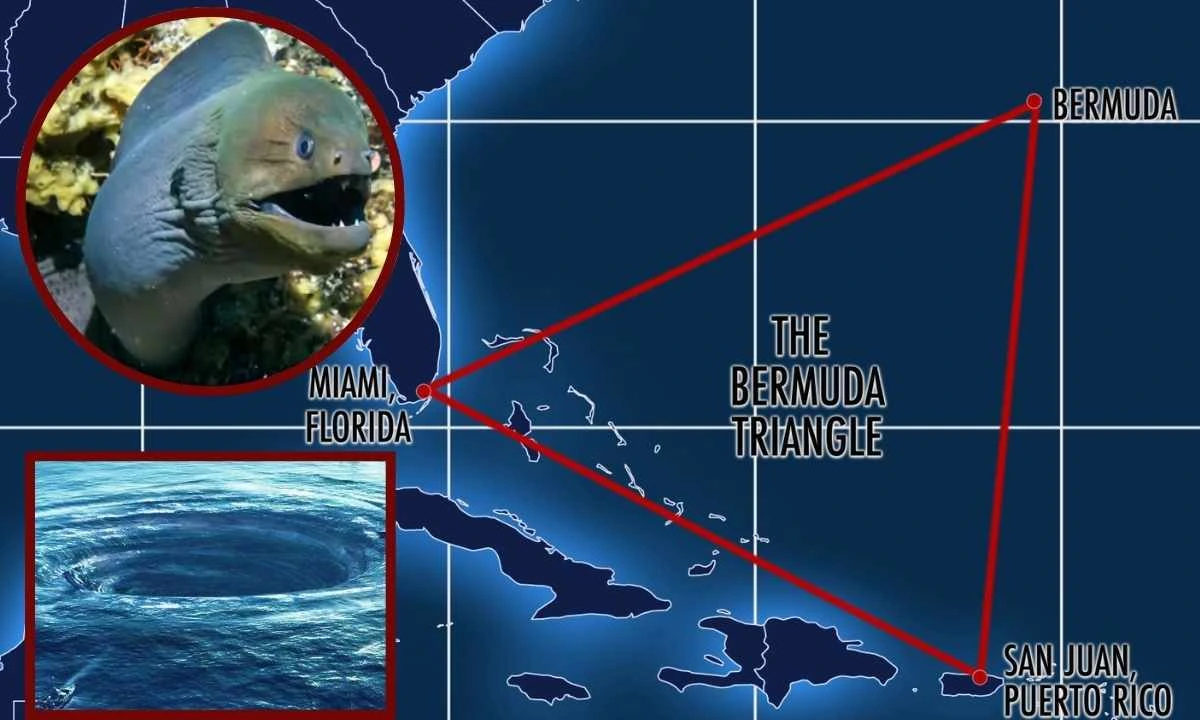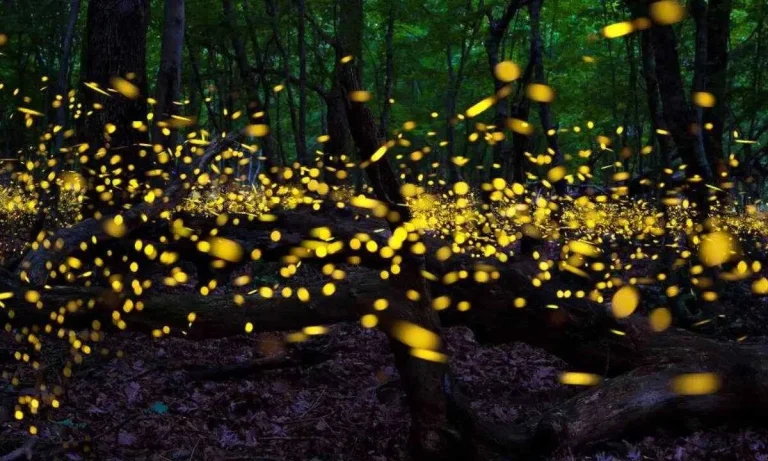The Sargasso Sea, located in the North Atlantic, and near to the mysterious Bermuda Triangle is unlike any other body of water on Earth. Bordered by ocean currents instead of land, this egg-shaped expanse stretches around Bermuda and eastward for over 1,000 kilometers. Known as the “golden floating rainforest,” it is home to over 270 marine species. Among the Sargasso’s many wonders, is its role as the exclusive breeding ground for two endangered eel species: the European eel (Anguilla anguilla) and the American eel (Anguilla rostrata). These mysterious creatures travel thousands of miles to spawn in this hidden sanctuary. Despite decades of research, how and where exactly in the sea eels reproduce remains a puzzle. But scientists recently found
Eels Baffling Even The Greatest Mind!
Eels are among the most enigmatic creatures in the marine world. There are around 800 eel species globally, but none captivate researchers like the European and American eels. Despite being studied for centuries, their reproductive habits remain elusive.
Historically, this mystery has baffled even the greatest minds. Sigmund Freud, early in his career, dissected over 400 eels, searching for male reproductive organs but found none—all were female. Philosophers like Aristotle speculated that eels spontaneously spawned from mud, while rural English folklore suggested they emerged from horsehair floating in the water. These myths persisted for centuries, with no clear answers.
Finally, in the early 20th century, Danish biologist Johannes Schmidt made a breakthrough. Through careful observation, he discovered that eels reproduce exclusively in the Sargasso Sea. As he approached the Bermuda Triangle, Schmidt found increasingly younger eels, confirming this sea as their birthplace. However, despite this monumental discovery, no one has ever observed eels spawning in the wild.

The Longest Migration in the Animal Kingdom
The life cycle of these eels is a tale of resilience and transformation. Born in the Sargasso as tiny, transparent larvae called leptocephali, they drift with ocean currents for months—or even years—before becoming “glass eels.” Once they reach freshwater ecosystems, they develop a yellow pigment and grow for decades.
When it’s time to reproduce, their bodies undergo remarkable changes. Yellow eels turn silver and begin a grueling migration back to the Sargasso. During this journey, they liquefy their stomachs to make room for developing reproductive organs. After completing their mission to spawn, they die.
For some species, like the blue ribbon eel, sex is fluid. They may begin life as males and later transition to females, adapting to environmental conditions. Eels’ ability to traverse marine, freshwater, and even damp terrestrial environments makes them uniquely adaptable, yet these traits haven’t shielded them from danger.

Overview of the Sargasso Sea
Located in the middle of the North Atlantic, the Sargasso Sea is unique. It is the only sea surrounded entirely by ocean currents instead of land and lies near the infamous Bermuda Triangle. Known as the “golden floating rainforest,” the sea is covered with thick tangles of Sargassum seaweed, providing a floating sanctuary for over 270 marine species. However, it’s not just a safe haven; the Sargasso is the only place where the European and American eels, both critically endangered species, breed.
Challenges to Eel Survival
Eels play a crucial role in maintaining healthy ecosystems. As predators, they consume fish, crustaceans, and worms, and as prey, they are vital for birds, larger fish, and mammals. Unfortunately, their populations are in sharp decline, with European eels suffering a staggering 95% drop since the 1980s.
The threats are numerous:
- Habitat Loss: Rivers and wetlands crucial for eels’ life stages are disappearing.
- Pollution: Industrial waste has severely degraded water quality.
- Overfishing: High demand for eels in global markets has led to unsustainable fishing practices.
- Hydropower Dams: These barriers block eels’ migratory paths, further reducing their numbers.
Tracking the Elusive Spawning Grounds
Since the 1970s, scientists have attempted to track eels using technology. Recent advancements in Pop-up Satellite Archival Tags (PSATs) have revolutionized this effort. These devices collect data during migration and release it once they reach the surface.
In 2018 and 2019, researchers tagged 26 large female eels in the Azores, located halfway between Europe and the Sargasso Sea. These eels had a shorter migration—”just” 2,500 kilometers. Although some tags were lost, others revealed critical information, providing the first direct evidence of adult eels reaching their presumed spawning grounds in the Sargasso.
However, the exact location of these spawning sites remains unknown. Questions about how eels navigate—whether through temperature, magnetism, terrain, or smell—are still unanswered. Solving these mysteries could be vital for conservation efforts.

Reinhold Hanel’s Research Voyages
For decades, researchers like Reinhold Hanel, a fish biologist from the Thünen Institute of Fisheries Ecology, have voyaged to the Sargasso Sea. Hanel embarks on month-long expeditions, trying to uncover the mysteries of eel migration and reproduction. Despite tagging and tracking these elusive creatures, many questions remain unanswered. Hanel’s work is vital to understanding how eels spawn and how their populations can recover from threats like habitat loss, pollution, and overfishing.
The Eel Lifecycle: A Story of Survival and Transformation
Stages of Life
Eels go through multiple transformations during their long lives:
- Leptocephali: Transparent larvae that drift with ocean currents.
- Glass Eels: Transparent but beginning to take an eel-like shape.
- Yellow Eels: Pigmented eels that mature in freshwater ecosystems.
- Silver Eels: Mature eels that undergo their final transformation during migration.

Unique Adaptations
Eels are incredibly adaptable. They swim forward and backward and can breathe through their skin, allowing them to survive short periods in damp areas with little water.
Reproductive Mystery
Eels liquefy their stomachs during migration to develop reproductive organs, leaving them unable to eat. They spawn only once in their lives and die soon after. Despite technological advances, no one has observed eggs or mating in the wild, keeping the mystery alive.
Conclusion
Eels’ journey to the Sargasso Sea is one of nature’s most extraordinary mysteries. Despite decades of research, their reproductive habits remain largely unknown. Solving this puzzle could improve conservation efforts and protect these critically endangered creatures. Scientists like Reinhold Hanel continue their work, unraveling secrets that could ensure the survival of these remarkable animals. The Sargasso Sea, with its unique ecosystem and historical significance, plays a crucial role in preserving this natural wonder.
Also read,











